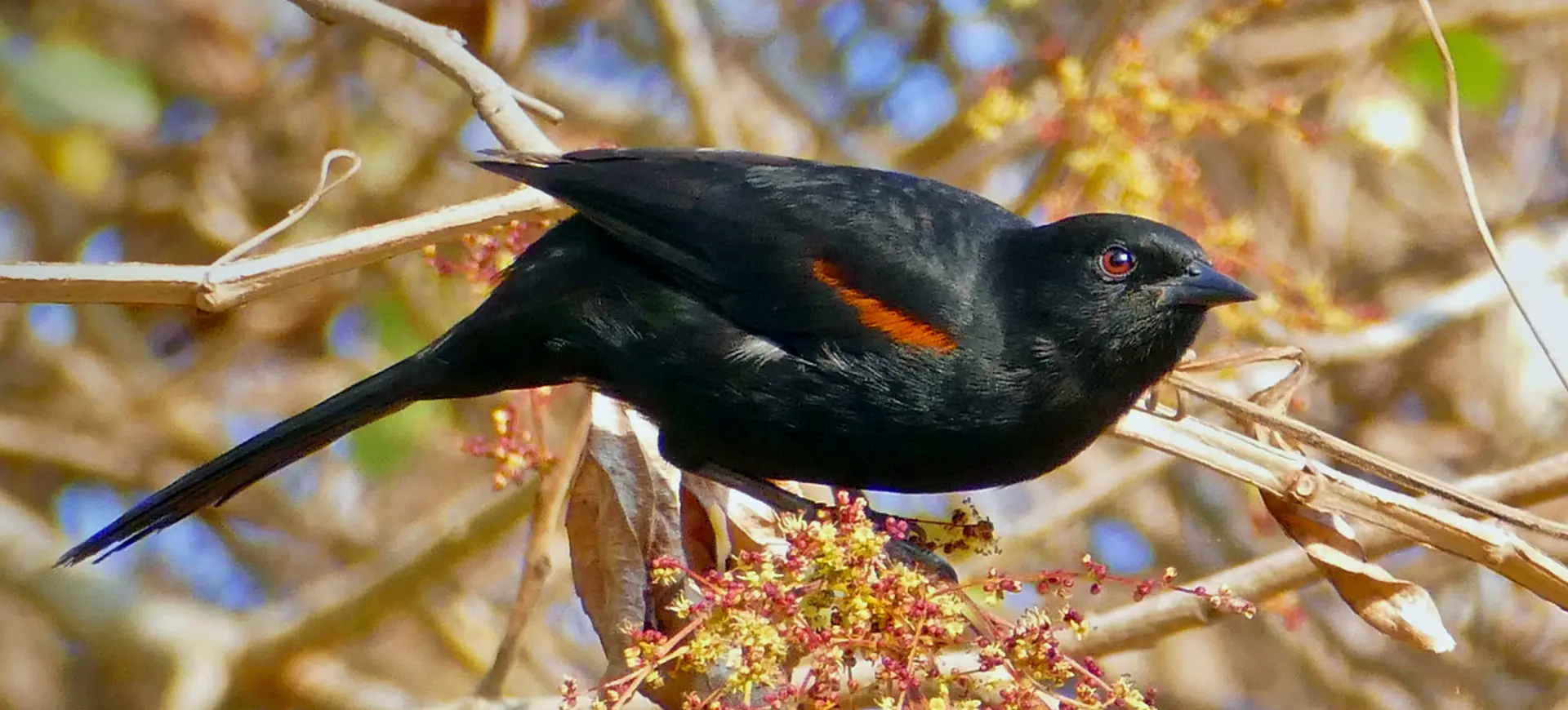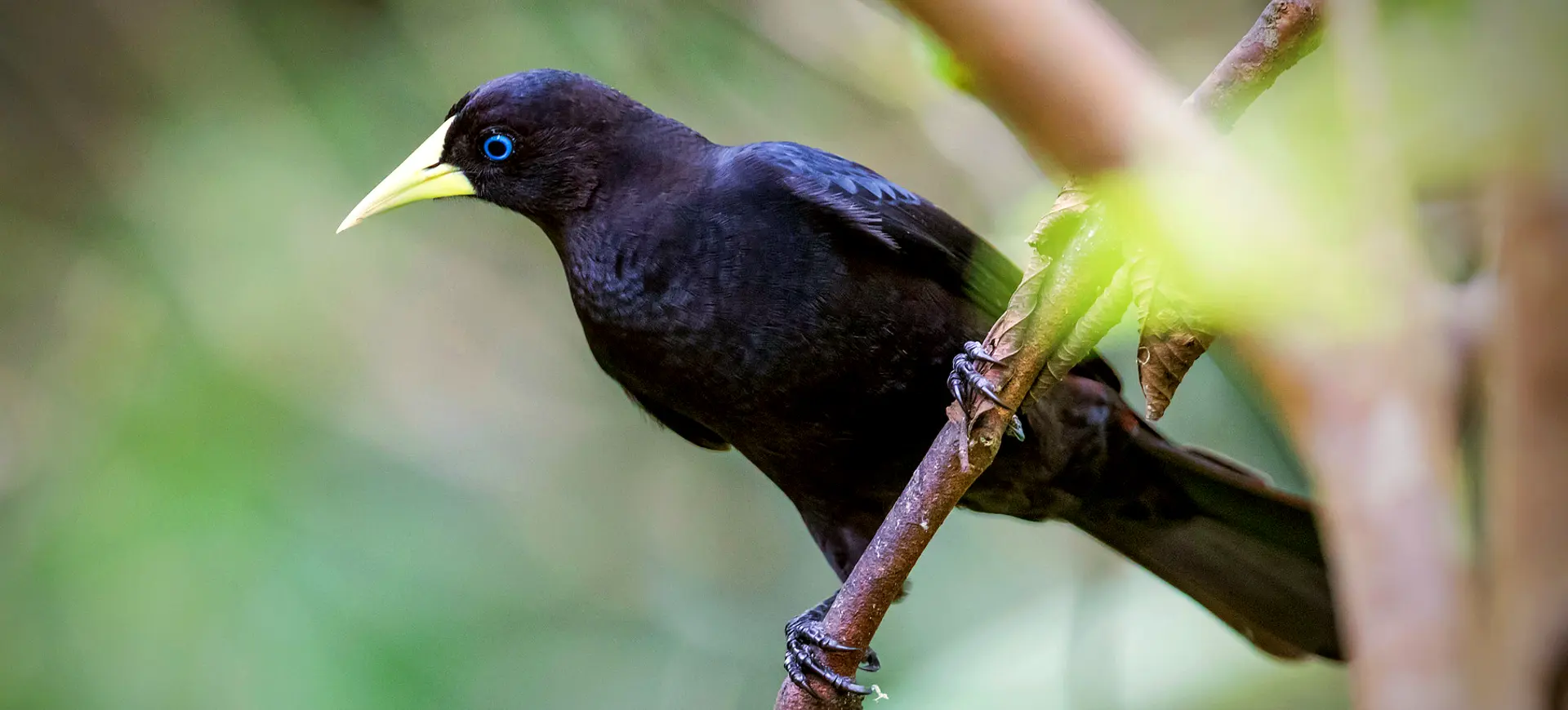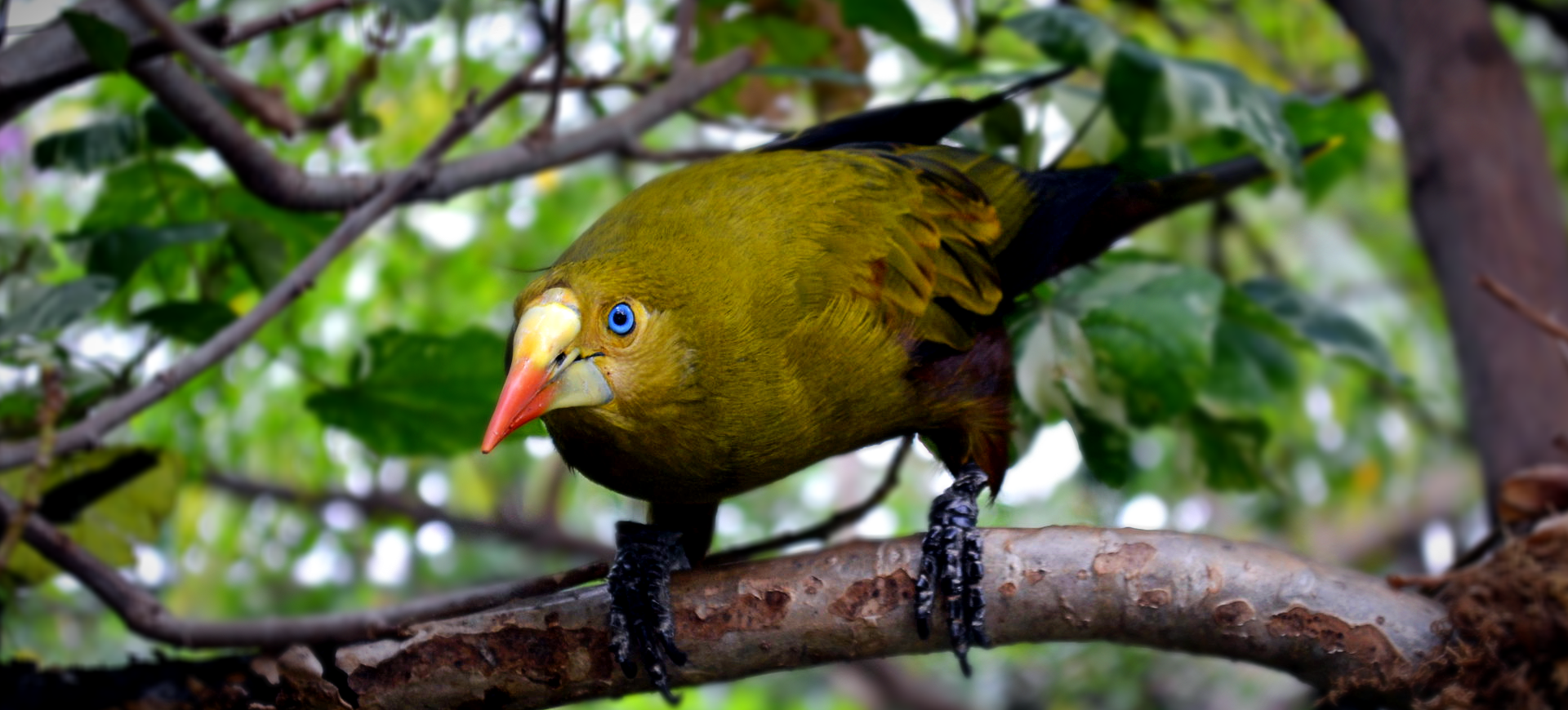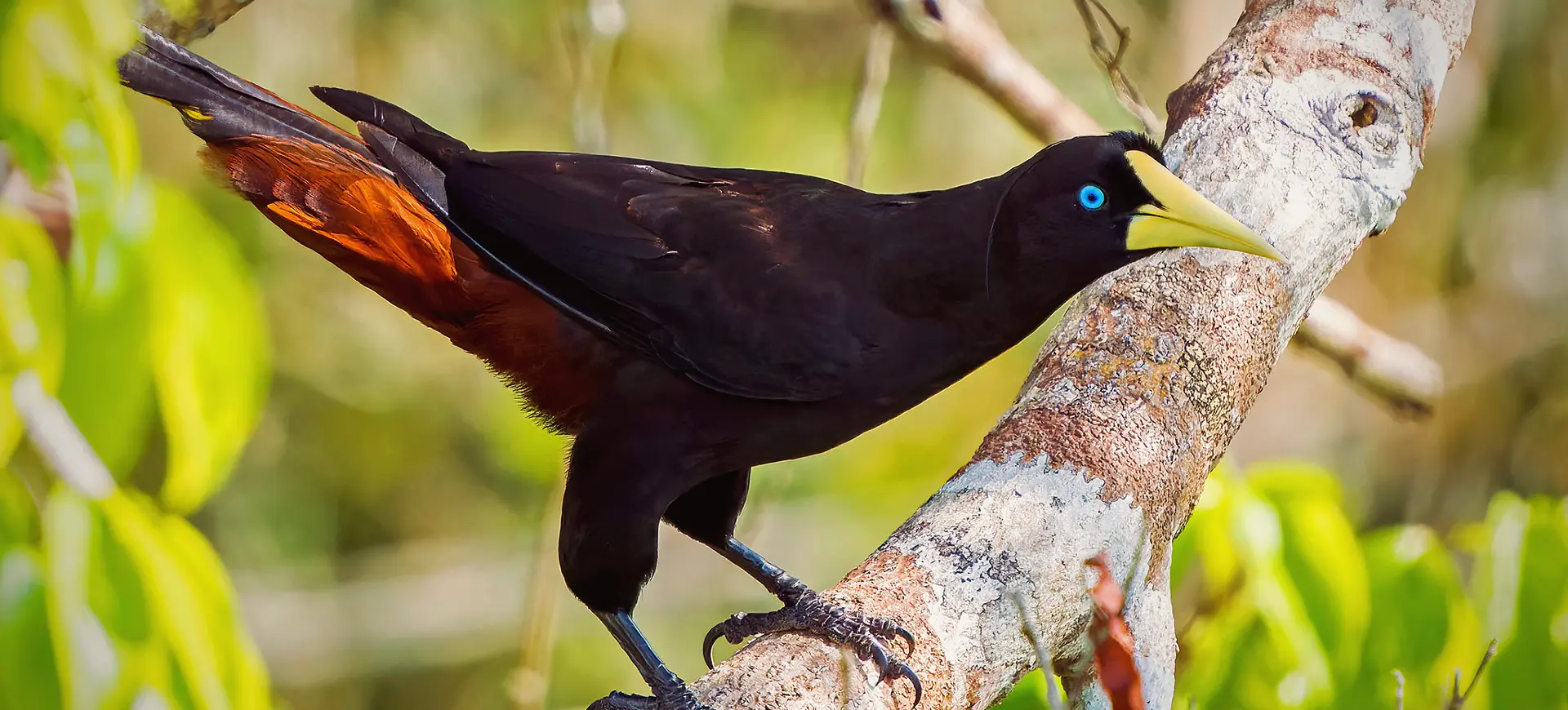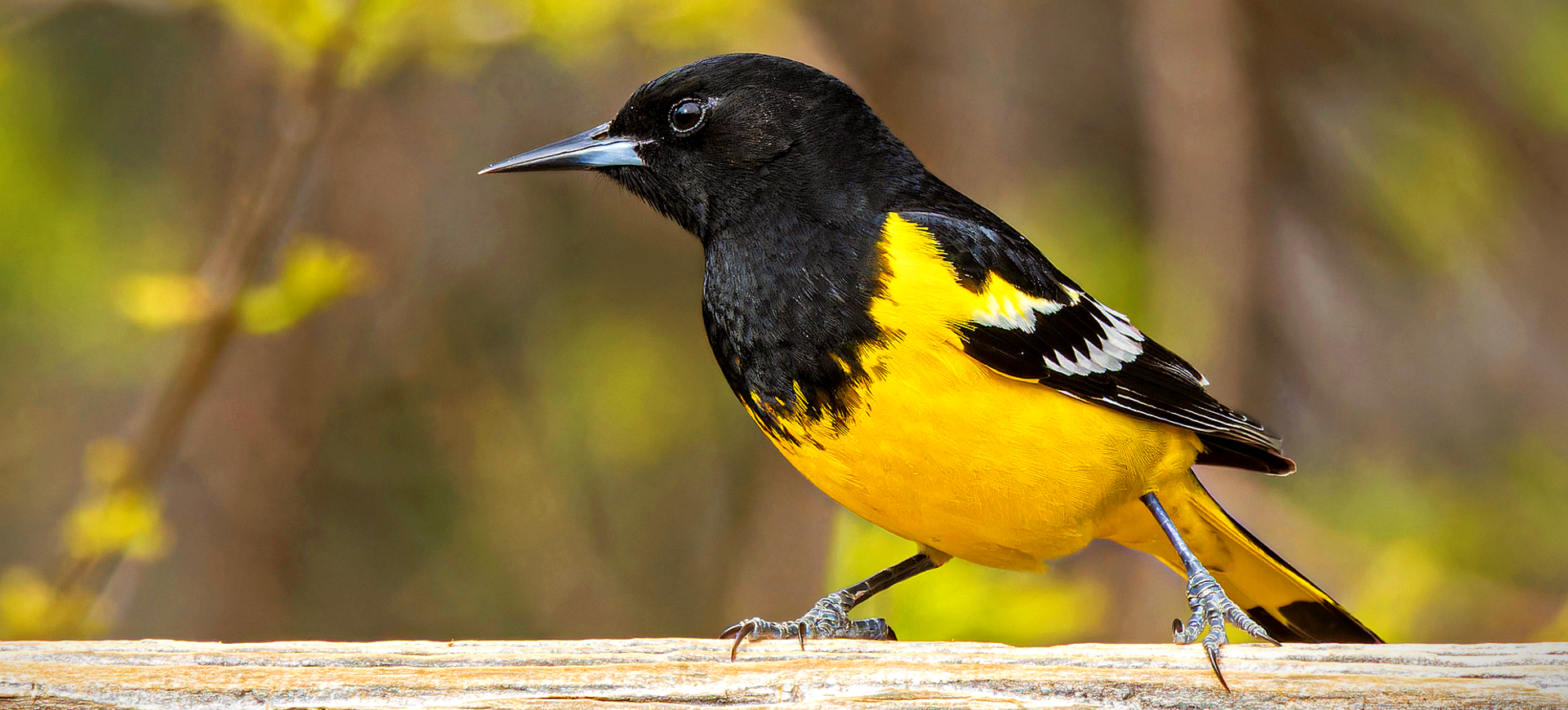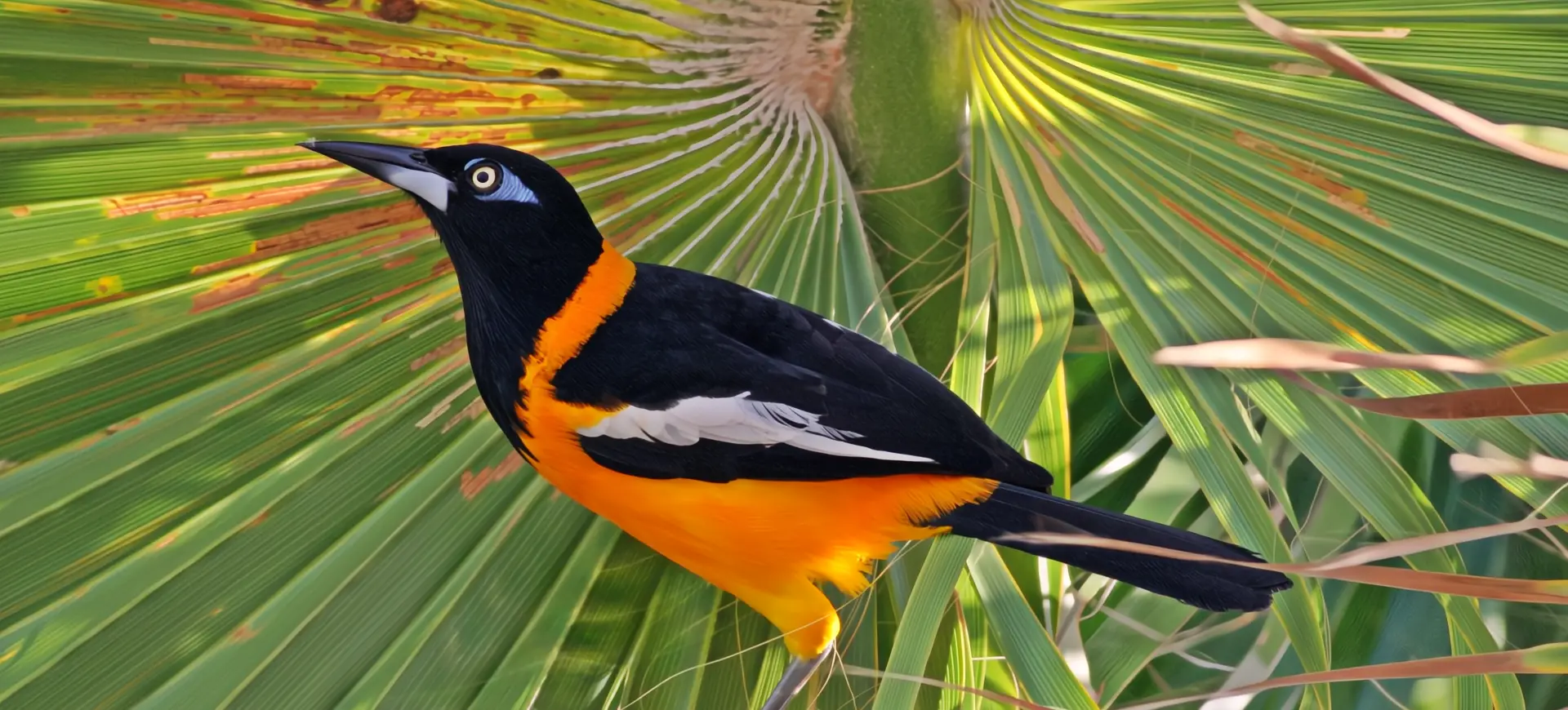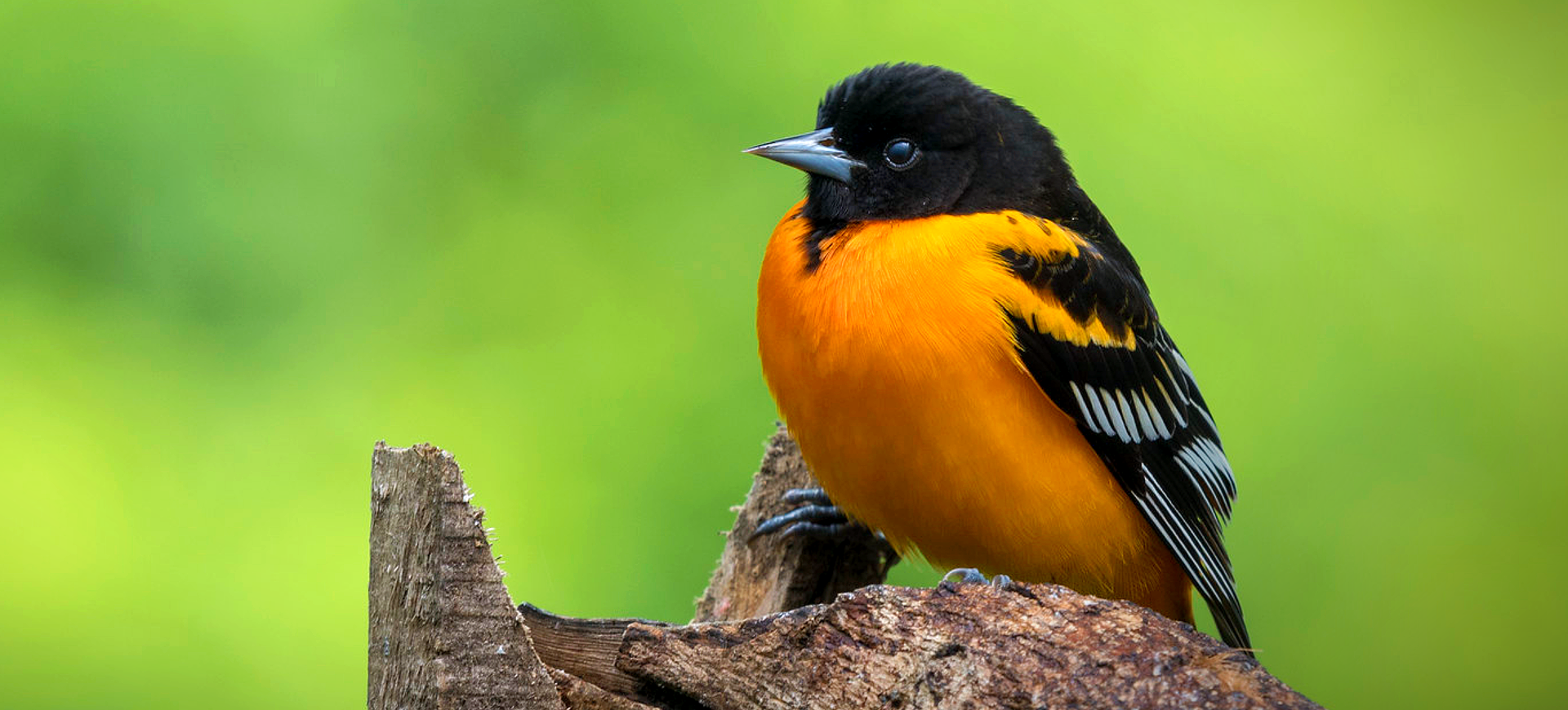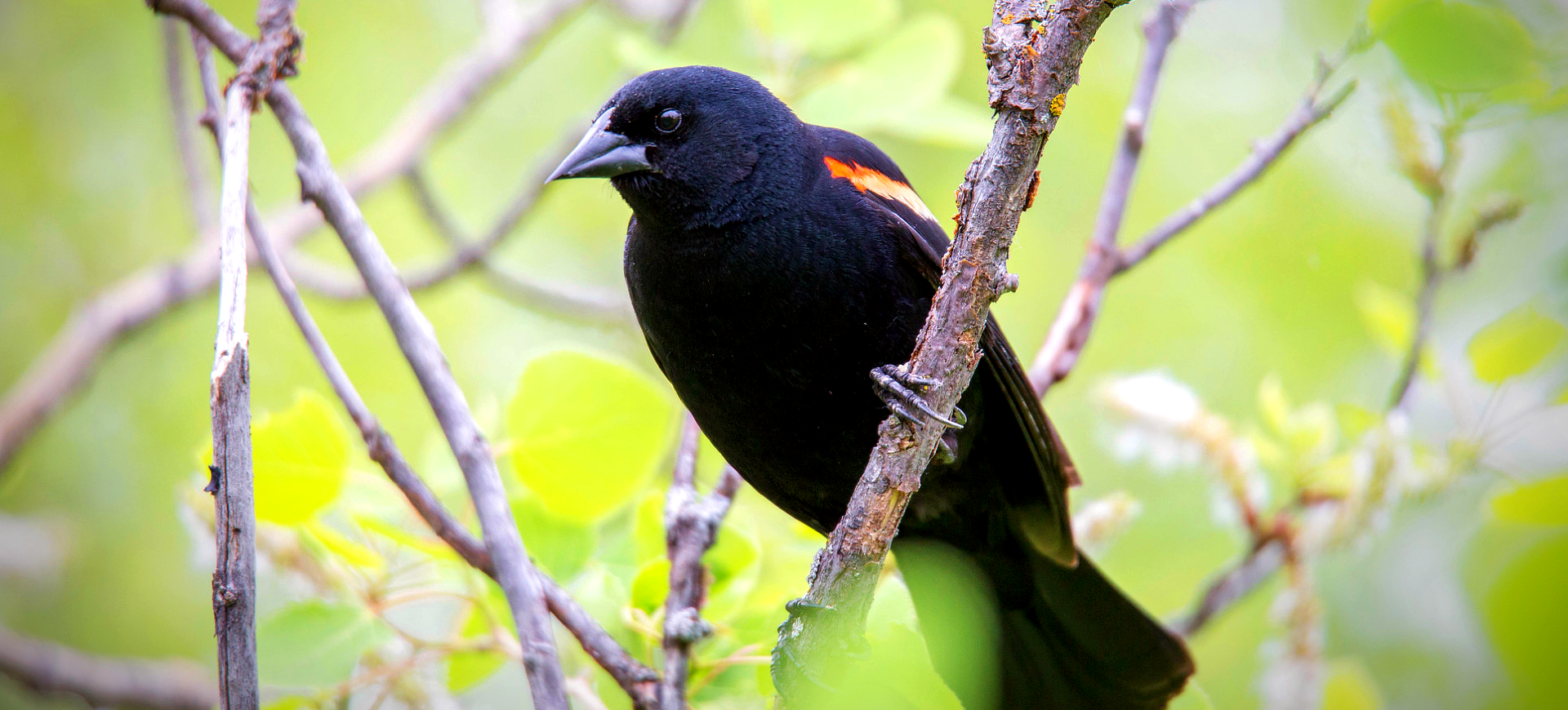Overview
The Hooded Oriole (Icterus cucullatus) is a vibrant and distinctive bird across the southwestern United States, Mexico, and Central America. Known for its striking coloration, the male Hooded Oriole sports a brilliant orange body with a contrasting black throat, face, and upper back. At the same time, females and juveniles are more subdued yellow-orange with grayish wings. This species prefers habitats that include open woodlands, gardens, and areas where palm trees are abundant, as they nest in the fronds of these trees.
Hooded Orioles are adept flyers, utilizing their slender, pointed wings to maneuver through their environment with grace and agility. Their diet is quite varied, including nectar, insects, and fruit, reflecting their adaptability to different food sources available in their range. They are particularly fond of feeding from hummingbird feeders, where their acrobatic feeding behavior can be observed. These orioles are also known for their melodic and flute-like songs, with males often singing from exposed perches to defend their territory and attract mates.
During the breeding season, Hooded Orioles exhibit fascinating nesting behaviors. They construct intricate hanging nests from fibers and grasses woven into the underside of palm fronds or other suitable substrates. This nesting strategy protects from predators and the elements. The species’ adaptation to human-altered landscapes has allowed them to expand their range into suburban areas, where they contribute to the local biodiversity by pollinating flowers and controlling insect populations.
Taxonomy
Kingdom
Phylum
Class
Order
Family
Genus
Species
Sub Species
Type
Physical Description:
The Hooded Oriole is a medium-sized bird with a slender body and a long, slightly curved bill adapted for its varied diet. Males are particularly striking with their bright orange plumage and distinctive black markings, making them one of the more visually captivating species in their range. Females and juveniles, while less colorful, still possess their own beauty with their more muted yellow-orange and grayish tones. The contrast between the sexes is a splendid example of sexual dimorphism in birds.
Their tails are long and rounded, aiding in flight maneuverability and balance. Hooded Orioles have strong, grasping feet that allow them to easily cling to vertical surfaces, such as tree trunks and feeder poles. This adaptation is particularly useful when foraging insects or nectar, demonstrating the species’ evolutionary response to its environment. The bird’s overall structure, from its pointed wings to its agile body, is a testament to its adaptability, enabling it to thrive in various settings, from dense woodlands to urban gardens.

Lifespan: Wild: ~5 Years || Captivity: ~10 Years

Weight: Male & Female: 0.6-1 ounces (17-28 g)

Length: Male & Female: 7-8.3 inches (17.8-21 cm)

Wingspan: Male & Female: 9.1-11.8 inches (23-30 cm)

Top Speed: 40 mph (64 km/h)
Characteristic:
Native Habitat:
Hooded Orioles are native to the southwestern United States, Mexico, and Central America. They prefer open woodlands, desert oases, and areas with prevalent palm trees, reflecting their nesting preferences. The birds are particularly associated with regions where palms are used for landscaping, including parks and residential areas. This preference for palm-dominated landscapes has facilitated their adaptation to urban and suburban settings, where they have become a welcome sight in many gardens.
Their ability to thrive in various habitats, from natural woodlands to human-altered environments, demonstrates the Hooded Oriole’s flexibility and resilience. The species’ success in these areas is also a reminder of the importance of diverse and native planting in urban landscaping, which can support not only Hooded Orioles but a variety of bird species and other wildlife.
Biomes:
Biogeographical Realms:
Continents:
Countries:
Diet:
Diet & Feeding Habits:
Hooded Orioles exhibit a diverse diet that includes nectar, insects, and fruits, showcasing their omnivorous nature. Their preference for nectar has led to specialized feeding behaviors, such as hovering, which they share with hummingbirds. However, they also glean insects from tree bark and leaves, displaying their versatility as foragers. The birds are often attracted to artificial feeders, especially those designed for hummingbirds, indicating their adaptability to human environments.
Including fruit in their diet adds another layer to their ecological role as seed dispersers, contributing to the health of their habitats. The variety in the Hooded Oriole’s diet reflects the species’ ability to exploit different food sources, which has likely facilitated their survival and expansion across varied landscapes. Their feeding habits underscore their ecological importance and provide delightful observation opportunities for bird watchers.
Mating Behavior:
Mating Description:
Hooded Orioles are monogamous during the breeding season, with males engaging in elaborate displays to attract females. These displays include vibrant plumage presentation, melodic singing, and aerial maneuvers, highlighting the importance of visual and auditory cues in their mating rituals. Once a pair is formed, they construct their unique hanging nests, demonstrating a strong partnership in preparing for their offspring.
The female is primarily responsible for building the nest, using her bill to weave together materials such as palm fibers, grasses, and other vegetation. The male may assist by guarding the nesting site and providing food for the female. Placing their nests in the undersides of palm fronds or similar substrates offers protection from predators and the elements, showcasing the species’ ingenuity in nest construction and site selection.
Reproduction Season:
Birth Type:
Pregnancy Duration:
Female Name:
Male Name:
Baby Name:
Social Structure Description:
Hooded Orioles exhibit a social structure that varies throughout the year, being more solitary or in pairs during the breeding season and gathering in small flocks during the non-breeding season. Their territorial behavior during breeding underscores the importance of individual space and resources for successful reproduction. The construction of nests and caring for young are cooperative efforts between mates, reflecting a strong bond and shared responsibility.
Hooded Orioles may join mixed-species flocks outside the breeding season, especially when foraging. This behavior indicates a level of social flexibility that allows them to adapt to changing conditions and availabilities of food resources. The species’ ability to navigate and thrive in various social configurations underscores its adaptability and resilience in environmental changes.
Groups:
Conservation Status:
Population Trend:
The Hooded Oriole is currently listed as Least Concern by the IUCN, reflecting a stable population across its range. This status is attributed to the bird’s adaptability to various habitats, including those modified by human activity. Their ability to utilize resources in urban and suburban settings, such as artificial feeders and landscaped areas, has contributed to their resilience and the maintenance of stable populations.
Conservation efforts for Hooded Orioles focus on habitat preservation, particularly protecting palm trees and other native vegetation crucial for nesting and feeding. Public education on the importance of native plantings and providing bird-friendly environments in urban areas also significantly supports the species. The stable population trend of Hooded Orioles offers a positive outlook for their future, highlighting the success of conservation strategies that integrate habitat protection with community engagement.
Population Threats:
The primary threats to Hooded Orioles include habitat loss and degradation, particularly the removal of palm trees and other native vegetation critical for nesting and feeding. Pesticide use poses a risk by reducing the availability of insect prey and potentially harming the birds directly. Climate change also presents a long-term threat, potentially altering the distribution of suitable habitats and affecting food availability.
Conservation strategies are focused on mitigating these threats through habitat protection, sustainable land management practices, and reducing pesticide use. Educating the public about the importance of preserving natural habitats and the benefits of biodiversity is crucial for the long-term survival of Hooded Orioles and many other species.
Conservation Efforts:
Conservation initiatives for Hooded Orioles include habitat restoration projects, public education programs, and promoting bird-friendly landscaping practices. Efforts to protect and plant native vegetation, especially palm trees, support the nesting and feeding needs of Hooded Orioles. Community involvement in conservation actions, such as participating in bird counts and supporting local conservation organizations, plays a vital role in protecting species.
The collaboration between conservationists, government agencies, and the public is essential for effectively conserving Hooded Orioles. By fostering a connection between people and their local wildlife, these efforts benefit the Hooded Oriole and enhance the overall health of ecosystems and the biodiversity they support.
Additional Resources:
Fun Facts
- Hooded Orioles are expert nectar thieves, often piercing the base of a flower to access nectar without pollinating the flower.
- They are attracted to the color red, which makes them frequent visitors to hummingbird feeders designed to mimic the appearance of flowers.
- The species is known for its ability to utilize man-made materials in nest construction, adapting to urban environments by weaving together items like string and yarn.
- Male Hooded Orioles are involved in territorial defense, using their bright plumage and songs to ward off rivals and attract mates.
- Their nests, resembling hanging baskets, are an engineering marvel, showcasing the intricate weaving skills of the females.
- Hooded Orioles can have two broods per breeding season, highlighting their reproductive success in favorable environments.
- They play a significant role in their ecosystems as pollinators and as part of the food web, controlling insect populations.
- The presence of Hooded Orioles in urban areas highlights the importance of green spaces and native planting in supporting wildlife.
- Their melodic songs contribute to the soundscape of their habitats, adding to the auditory beauty of natural and human-modified landscapes.
- Despite their vibrant appearance, Hooded Orioles can be surprisingly difficult to spot in their natural habitat, thanks to their ability to blend into the foliage.






